INTRODUCTION
The purpose of this paper is to advise of upcoming revisions to average weekly earnings estimates for the period August 1996 to May 2008 inclusive. The paper provides information on the nature and the magnitude of the revisions. The revised estimates will be published in the August 2008 issue of Average Weekly Earnings, Australia (cat. no. 6302.0) to be released on 13 November 2008.
The overall impact of the revisions is relatively small at the Australia level. There are, however, more significant impacts on some lower level (sector, state and industry) data series. It should also be noted that the magnitude of the revisions are generally less than the standard errors associated with the estimates, and that the impacts of the revisions on estimates of quarterly movements are generally minor.
BACKGROUND
The Survey of Average Weekly Earnings (AWE) provides estimates of employee earnings based on information obtained from a sample survey of employers. Estimates of average weekly earnings, and changes in average weekly earnings, are published quarterly in original, seasonally adjusted and trend terms. Average weekly earnings estimates from the AWE survey are referred to extensively in Commonwealth, state and territory legislation, including for the indexation of a number of government benefit payments. AWE series are also used in private sector contracts.
The definition of earnings currently used in the AWE survey is, broadly, current and regular payments in cash to employees for work done. Thus, earnings series from the AWE survey have historically excluded amounts salary sacrificed, as these were considered as payments in kind. Under the revised conceptual framework for measures of employee remuneration, as presented in Information Paper: Changes to ABS Measures of Employee Remuneration (cat. no. 6313.0), amounts salary sacrificed are now considered conceptually to be wages and salaries in cash. However, as explained in 6313.0 the ABS has continued to publish the AWE series on the old basis (i.e. exclusive of amounts salary sacrificed) to maintain long term comparability of the time series.
The ABS also expanded the AWE survey from August 2007 to separately collect amounts salary sacrificed by employees, with the intention of releasing a new series of earnings inclusive of salary sacrificed amounts.
Although the estimates of earnings from the AWE survey should exclude amounts salary sacrificed, in practice there is evidence that earnings series from the AWE survey have inadvertently included some amounts salary sacrificed. The ABS has been working closely with data providers to identify any instances of mis-reporting, and to amend their reporting practices where necessary. Furthermore, the ABS is now able to quantify the extent of mis-reporting that has occurred in recent times, and to estimate the impact of this mis-reporting on the historical series following the separate collection of salary sacrificed amounts from August 2007 and other analyses undertaken. As a result, AWE data series for August 1996 through to May 2008 have been revised to exclude all amounts salary sacrificed. A broad indication of the data impacts, including the key series affected by the revisions, is provided below.
DATA IMPACTS
It is important to note that the revisions outlined below relate to the impact of the incorrect inclusion of salary sacrificed amounts in AWE. They are not a measure of total amounts salary sacrificed by employees.
For the period May 2006 to May 2008, revisions have been applied based on the correction of quantified reporting errors made by individual businesses. While these revisions primarily relate to the incorrect inclusion of salary sacrificed amounts they also reflect minor amendments made to rectify other confirmed reporting errors. As data providers were being contacted progressively to establish their reporting practices, there was some correction of reporting errors that also occurred progressively. In all cases data for all affected units have been revised, at unit level, back to May 2006. Thus the largest data revisions are (generally) applicable to the May 2006 estimates. For this reason, data impacts referred to throughout the remainder of this paper primarily relate to the revisions made to the series as at May 2006 as well as at May 2008, the most recently published estimate.
Data prior to May 2006 have been revised using factors based on the difference between the published series and the revised series as at May 2006. Factors have been calculated and applied at the sector by state by industry division level back to August 1996. This time-frame was chosen based on analysis of salary sacrifice information available from other ABS collections, such as the Survey of Employee Earnings and Hours and the Labour Price Index, which suggest that the prevalence of salary sacrifice arrangements among employees prior to 1996 was negligible. While such information provides a useful guide, it does not necessarily correlate directly with the level of mis-reporting of amounts salary sacrificed in the earnings data reported for the AWE survey, therefore, the revisions made to the series prior to May 2006 reflect an estimate of the impact of the mis-reporting on the historical AWE series.
Because of the methodology employed in smoothing the impact through the historical series, the revisions primarily impact the level estimates, with a negligible impact on quarterly and annual movements.
Australia level
Overall, the impact of the revisions at the Australia level are small. In seasonally adjusted terms, the revised May 2006 estimate of average weekly ordinary time earnings (AWOTE) for full-time adult persons ($1,032.00) is 1.0% below the previously published estimate ($1,042.50). For all employees' average weekly total earnings (AWTE) (seasonally adjusted), the difference between the revised and previously published estimates is also -1.0%. The revision to AWOTE for full-time adult persons for the most recent quarter (i.e. May 2008) is -0.4%.
Graph 1: Difference between revised and published AWOTE (a), Full-time adult persons, Australia - Seasonally Adjusted
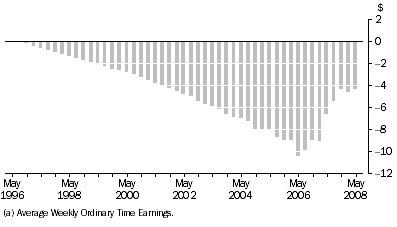
Graph 2: Difference between revised and published AWTE (a), All persons, Australia - Seasonally Adjusted
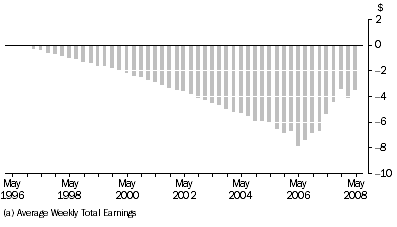
Graph 3: Full-time adult ordinary time earnings, Australia, Quarterly % change in seasonally adjusted estimates
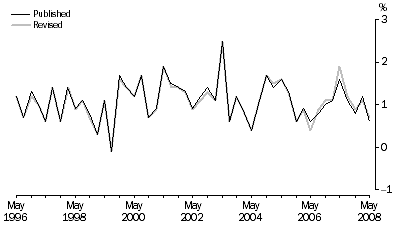
Sector
The impact of the revisions is higher for the public sector series compared to the private sector series. This is consistent with the fact that salary sacrifice arrangements are more prevalent in the public sector than in the private sector and, where salary sacrifice arrangements are utilised, the amounts salary sacrificed by public sector employees are (on average) greater than the corresponding amounts for private sector employees. The revised May 2006 average weekly total earnings estimates for both full-time adults and all employees in the private sector are around 0.5% below the previously published estimates, whilst the corresponding revisions to public sector estimates are around 2.5% below the previously published estimates. The revision to AWOTE for full-time adult persons for the most recent quarter (i.e. May 2008) is -1.6% for public sector and virtually no change for private sector.
Graph 4: Difference between revised and published AWOTE (a), Full-time adult persons, Private sector - Seasonally Adjusted
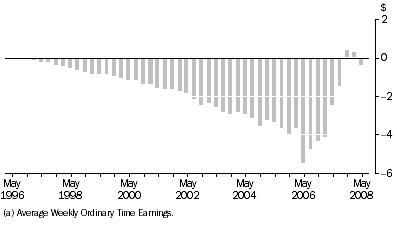
Graph 5: Difference between revised and published AWTE (a), All persons, Private sector - Seasonally Adjusted
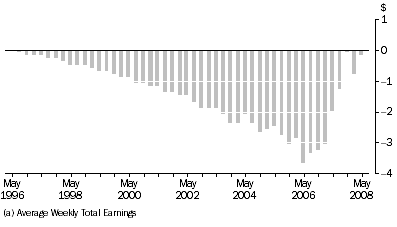
Graph 6: Difference between revised and published AWOTE (a), Full-time adult persons, Public sector - Seasonally Adjusted
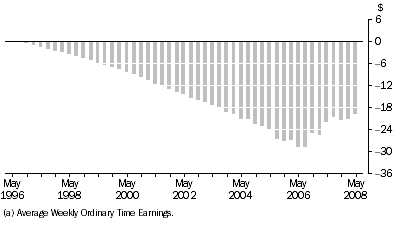
Graph 7: Difference between revised and published AWTE (a), All persons, Public sector - Seasonally Adjusted
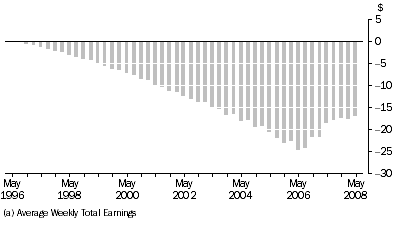
State
At the state level, the data revisions at May 2006 have mainly impacted the Northern Territory (-3.0% for full-time adult ordinary time earnings), Queensland (-1.6%) and Victoria (-1.3%). These revisions are primarily as a result of correcting reporting errors of a number of large public sector units in these states/territories.
Table 1: Impact of AWE series data revisions, States and territories: Full time adult ordinary time earnings |
|  |
 | May 2006(a) | May 2008(a) |  |
 | % change | % change |  |
|  |
| New South Wales | -0.6 | -0.3 |  |
| Victoria | -1.3 | -0.6 |  |
| Queensland | -1.6 | -0.6 |  |
| South Australia | -0.7 | -0.3 |  |
| Western Australia | -0.6 | 0.0 |  |
| Tasmania | -0.6 | -0.4 |  |
| Northern Territory | -3.0 | -0.2 |  |
| Australian Capital Territory | -0.9 | -1.1 |  |
|  |
| (a) Percentage difference between revised and previously published estimates (seasonally adjusted). |
Industry
From the information currently being collected in the AWE survey, and from other data sources such as the Survey of Employee Earnings and Hours, it has been established that there is considerable variability across industries in the uptake and use of salary sacrifice arrangements. This variation was reflected in the pattern of mis-reporting identified through the quality assurance process, with the more significant revisions generally concentrated in those industries with more extensive use of salary sacrifice arrangements. Shown in Table 2 below are those industries where the previously published estimates for May 2006 have been revised down by more than 1.0%. One notable exception from this table is the Communication services industry where, despite the relatively high use of salary sacrifice arrangements, the level of mis-reporting of salary sacrifice was established to be negligible.
Table 2: Impact of AWE series data revisions, selected industries: Full time adult ordinary time earnings |
|  |
 | May 2006(a) | May 2008(a) |  |
 | % change | % change |  |
|  |
| Health and community services | -3.9 | -2.0 |  |
| Education | -3.2 | -1.9 |  |
| Electricity, gas and water supply | -2.7 | -2.1 |  |
| Mining | -1.3 | 0.0 |  |
| Government administration and defence | -1.2 | -0.4 |  |
|  |
| (a) Percentage difference between revised and previously published estimates (original series). |
Industry based estimates for the period August 1996 to February 2006 have been revised at the industry division level only; revisions have not been applied at more detailed levels (e.g. industry subdivision) and therefore are not available.
RELEASE INTENTIONS
Earnings estimates presented in the November 2008 issue of
Average Weekly Earnings, Australia (cat. no. 6302.0), to be released on 13 November 2008, will reflect the revisions made to the historical estimates, and the spreadsheets released on the ABS web site concurrently with the publication will contain the full revised time series. Data prior to August 1996 have not been revised.
As indicated above, information on amounts salary sacrificed is being collected separately in the survey of Average Weekly Earnings since August 2007. The ABS is proposing to release earnings estimates based on the revised conceptual framework for measures of employee remuneration (i.e. inclusive of amounts salary sacrificed) following an assessment of the quality of the new series. Once this assessment has been completed, estimates of suitable quality will be released retrospectively and then on a continuing basis. This new series will be released as an additional (not replacement) AWE series, and will have different labels to the current AWE series, to clearly distinguish the new series from the current series. It is expected that the new series will be released in April 2009.
FURTHER INFORMATION
For further information or clarification on the issues presented in this paper, please contact Tom Joseph (08 93605123 or email tom.joseph@abs.gov.au).
 Print Page
Print Page
 Print All
Print All